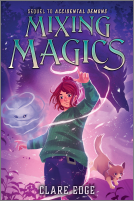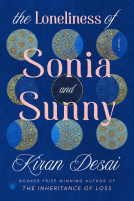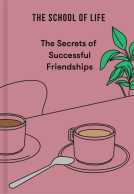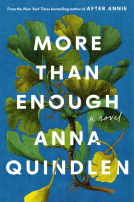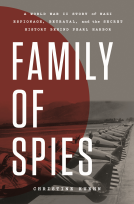
The Treeline
The Last Forest and the Future of Life on Earth
by Ben Rawlence
This title was previously available on NetGalley and is now archived.
Send NetGalley books directly to your Kindle or Kindle app
1
To read on a Kindle or Kindle app, please add kindle@netgalley.com as an approved email address to receive files in your Amazon account. Click here for step-by-step instructions.
2
Also find your Kindle email address within your Amazon account, and enter it here.
Pub Date Feb 15 2022 | Archive Date Mar 01 2022
Talking about this book? Use #TheTreeline #NetGalley. More hashtag tips!
Description
Winner of the 2023 Helen Bernstein Book Award for Excellence in Journalism
"Original and readable." ―Financial Times' Best Environmental Books of 2022
"Superb, inspiring." ―Winner, National Academies of Science Schmidt Awards for Excellence in Science Communications
“Illuminating.” —Silver Medalist, National Outdoor Book Awards
Longlisted for the American Library Association's 2023 Carnegie Medal for Excellence in Nonfiction
Finalist, 2023 Banff Mountain Book Competition
Finalist, 2023 Dayton Literary Peace Prize
In the tradition of Elizabeth Kolbert and Barry Lopez, a powerful, poetic and deeply absorbing account of the “lung” at the top of the world.
For the last fifty years, the trees of the boreal forest have been moving north. Ben Rawlence's The Treeline takes us along this critical frontier of our warming planet from Norway to Siberia, Alaska to Greenland, Canada to Sweden to meet the scientists, residents and trees confronting huge geological changes. Only the hardest species survive at these latitudes including the ice-loving Dahurian larch of Siberia, the antiseptic Spruce that purifies our atmosphere, the Downy birch conquering Scandinavia, the healing Balsam poplar that Native Americans use as a cure-all and the noble Scots Pine that lives longer when surrounded by its family.
It is a journey of wonder and awe at the incredible creativity and resilience of these species and the mysterious workings of the forest upon which we rely for the air we breathe. Blending reportage with the latest science, The Treeline is a story of what might soon be the last forest left and what that means for the future of all life on earth.
Advance Praise
"What an extraordinary book this is! Rawlence writes with elegant clarity about a world knocked out of whack. The Treeline is a fine work of science journalism, an adventure tale that tracks the shifting fortunes of the planet’s northernmost forests, a record of the cruel legacies of capitalism and colonialism. Most of all it is a sustained act of attention, of observing and listening to a land that observes and listens back. This is not just a description of a warming world but an active invitation to live differently, to participate with wisdom and humility in the cacophonous and ever-unfinished abundance of terrestrial life." —Ben Ehrenreich, author of Desert Notebooks: A Roadmap for the End of Time
"A fascinating book drawing on a brilliant, original line of thinking to reveal the roots and reach of our changing boreal forests. Once again, Rawlence delivers a perfect combination of lyrical writing and rigorous reporting. Utterly illuminating." —Sophy Roberts, author of The Lost Pianos of Siberia
"In this beautiful homage to the world’s northernmost forests, Ben Rawlence brings the zeal of a journalist and the heart of a naturalist to his journey following the treeline east into the rising sun. As Rawlence explores vast wildwoods of pine, birch, larch, and spruce, he uses alluring prose to present fascinating and challenging ideas of what a forest is: not a static place on a map but a creative, evolutionary process—a “mobile community." Rawlence documents how the treeline is now undergoing one of its greatest transformations with enormous consequences for humanity and the planet. By focusing his formidable curiosity and craft on the arboreal biosphere, Rawlence has given both trees and people an enormous gift." —M.R. O'Connor, author of Wayfinding
“Our trees are on the move but we have no place left to go. The Treeline is a moving, thoughtful, deeply reported elegy for our vanishing world and a map of the one to come." —Nathaniel Rich, author of Losing Earth and Second Nature
"Rawlence takes us on an unforgettable personal tour of the major treelines of the Northern Hemisphere. His prophetic insights on how global climate change is rapidly rewriting the boundaries and biodiversity of earth’s boreal forests are colored by the insights of the botanists, glaciologists, and indigenous peoples he met along the way. The Treeline is a page-turner that poetically challenges us to confront the elephant in the room." —James McClintock, author of Lost Antarctica and A Naturalist goes Fishing
"Urgent and insightful tour of some of the world’s strangest, most bewitching and most endangered environments... A tribute to indigenous wisdom, a paean to the otherworldly beauty of the taiga and the tundra, and a highly readable overview of the latest science. This is an important book, and one I will be pressing into other people’s hands." —Cal Flyn author of Islands of Abandonment
"The very treeline is on the move: a devastating image. This book is an evocative, wise and unflinching exploration of what it will mean for humanity." —Jay Griffiths, author of A Sideways Look at Time
Marketing Plan
"*Early Reader Review Campaign
*National IndieBound Campaign
*Netgalley Promotion
*Email Marketing Campaign
*Bookstagrammer/Booktuber Campaign
*Organizational Outreach
*Library Marketing Campaign
*Academic Marketing Campaign
*Social Media Campaign
*Macmillan Speaker's Bureau
*Author Twitter: BenRawlence"
Available Editions
| EDITION | Other Format |
| ISBN | 9781250270238 |
| PRICE | $29.99 (USD) |
| PAGES | 304 |
Average rating from 15 members
Readers who liked this book also liked:
Kim Hana; Hwang Sunwoo
Biographies & Memoirs, Nonfiction (Adult), Parenting, Families, Relationships
The School of Life
Health, Mind & Body, Parenting, Families, Relationships, Self-Help
